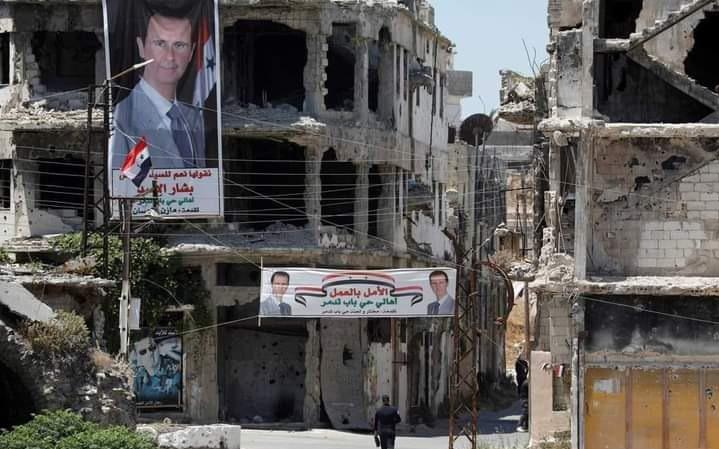Syria’s Assad regime could prevent up to 13 million people — about 60% of the country’s pre-conflict population — from returning to their homes.
A 61-page report by the Syrian Network for Human Rights analyzes the effect of regime laws giving it power to seize their land and property, before and after the Syrian uprising of March 2011.
The laws could affect 12.3 million Syrians who are refugees or displaced within the country; families of 500,000 Syrian civilians who not yet registered as dead but are believed to have been killed, mainly by the regime; and at least 112,000 forcibly disappeared.
In 2012, the regime issued Decree 66, which targeted opposition areas in the name of “redevelopment”, and Law 19 authorizing the seizure and expropriation of property belonging to those labelled as “threats to security” or “terrorists”. Law 23 of 2015 empowered administrative units, including municipalities and governorates, to seized property located outside zoning areas.
And Law 10 of 2018 permits the regime to expand the “development” scheme from Damascus to all of Syria. Property owners had only 30 days — later extended to a year after an outcry — to file an appeal to prove land or property ownership.
The SNHR notes that even the 12-month period is “simply not enough for a displaced person whether refugee or displaced person to locate and prepare the necessary documents”.
See also Lebanon Warns New Regime Property Law Could Hinger Refugee Return
A System of Looting
As regime forces — enabled by Russia and Iran — seized opposition territory from 2016, they looted homes and property. Taking electrical appliances and furniture, the occupiers demolish roofs and walls to take out iron and water and electrical fixtures. Some houses were used as military headquarters.
In a May 2021 survey of displaced residents of the Yarmouk camp in southern Damascus, 93.2% reported looting which included “furniture, doors, windows, and electrical wires”.
Entire villages and small towns, especially those which were near frontlines of the conflict, are now virtually depopulated. The regime is not permitting residents to return, as the roofs of buildings continue to be pillaged for iron.
Occupying regime forces have arranged contracts with merchants, first for electrical appliances and then for furniture. Further contracts follow for “electrical wires, ceramics, and tiles”, and finally for iron.

